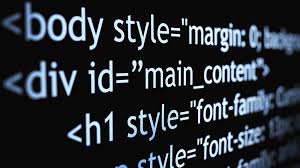What is an Angle Bracket?

Angle brackets, often referred to as angled brackets or chevrons, are common punctuation marks used in writing to indicate quotations, titles, footnotes or to enclose mathematical expressions. They are typically found in computer programming languages, HTML or XML coding, and mathematics textbooks, among other fields. Angle brackets look like a sideways V or < and > and are very easy to use once you understand their function.
In programming languages, angled brackets are used to mark off special keywords or commands in code, often used to enclose elements or parameters of code. For example, when coding in HTML or XML, the angled brackets are used to surround tags that indicate the start and end of specific elements of web pages. These tags are essential for designing well-organized and user-friendly web pages.
Angle brackets are also commonly used in mathematical expressions, where they may signify an interval or limit, or denote vector notation. They are particularly important in geometric concepts, where they denote an angle in geometrical figures. In such instances, the angle bracket points to the vertex of the angle, with the vertex at the tip. This makes it easy to distinguish an angle from a parenthesis or square bracket.
In addition to programming languages and mathematics, angle brackets are commonly used in writing, particularly as quotation marks. Unlike quotation marks, however, angle brackets are not used to signify direct speech. Rather, they are used to refer to specific chapters or sections in books or articles, or to provide a definition of a term.
In summary, angle brackets are an essential part of computer and math languages, as well as writing. They provide a convenient way to organize code, identify specific elements of web pages, and denote angles in geometrical figures, among other uses. While they may seem like a small part of language, their function is critical to accurate communication in a wide range of fields.





